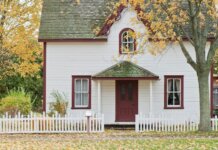Home refinancing volume, including refinancing through the Home Affordable Refinance Program (HARP), continued to decelerate during the second quarter, according to the Federal Housing Finance Agency's (FHFA) 2013 Refinance Report.
Total refinance volume was just below 1.3 million for the second quarter, while HARP refinances stood close to 280,000, or about 22% of all refinancings, according to the report.
It was the third consecutive quarter that HARP refinancing volume dropped; however, the FHFA notes that volume remains at above-average levels prior to program changes implemented last year.
More than 2.7 million homes have been refinanced through HARP since the program was launched in April 2009.
Underwater borrowers with loan-to-value (LTV) ratios of greater than 125% continue to represent a significant portion of total HARP volume. In the second quarter they represented about 19% of all volume, while borrowers with LTVs of greater than 105% represented about 43% of all volume.
About 18% of HARP refinancings were for borrowers with 15- or 20-year mortgages.
States where HARP refinancings accounted for a high percentage of all refi volume included Nevada (59%) and Florida (50%), both of which are more than double the state average of about 21%.
To download the full report, click here.
Launched as a joint project of the FHFA and the Treasury Department, HARP was designed to assist borrowers with existing mortgages owned or guaranteed by government-sponsored enterprises (GSEs) Freddie Mac or Fannie Mae with refinancing, even if they had little or no equity, or were underwater.
The first iteration of the program, HARP 1.0, required borrowers to be current on their mortgage payments and to have an LTV ratio of 105% or less. Initially, it was anticipated that 4 million to 5 million borrowers would take advantage of the program, but by September 2011, the participation rate was less than 1 million.
As a result, the FHFA, government-sponsored enterprises, lenders and other stakeholders identified several issues that were deterring homeowners from using the program, including the fact that loans with LTVs greater than 125% were not eligible for HARP 1.0 refinances and that the program's short duration (approximately 15 months) was discouraging lenders from participating.
After soliciting feedback from stakeholders, many of the problems with HARP 1.0 were addressed, compromises were made, and in October 2011, a re-branded program, ‘HARP 2.0,’ was launched. Changes included removing the 125% LTV ceiling and extending the duration of the program by 18 months.
Since that last round of changes, however, the Office of the Inspector General has identified additional barriers to HARP participation. A new round of modifications to the program has been proposed; however, the so-called ‘HARP 3.0’ program is yet to be approved and codified.
As such, the OIG will soon be embarking on a major nationwide public relations campaign to educate borrowers about HARP, which was recently extended to run through 2015.
To download the full report, click here.













